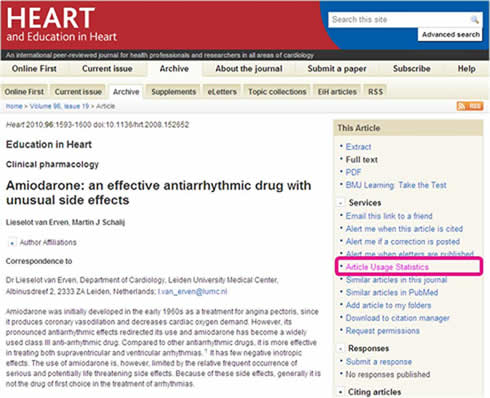Article usage metrics now available on BMJ journals
27 May, 11 | by BMJ
There has been a movement in the STM community to offer relevant metrics at article-level to help users determine the value and quality of research. This data provides additional context to a paper and consequently the BMJ journals have implemented online usage statistics in addition to the recent introduction of links to third-party citation measuring services.
What is online usage data?
Our articles are available as Abstracts/Extracts and Full-Text on an HTML page, which is best suited to online viewing, and PDF, which many prefer when printing an article to read offline. We record the number of times that each format is accessed and we provide this information as a number of “downloads” for each article. Total downloads (split into the different types of format) are provided as an aggregate metric, as well as in a month-by-month breakdown. See an example of this online usage data below.

As mentioned above and in previous posts, we are providing citations to each article as measured by a number of third-party citation measuring services, including Scopus and ISI Web of Science. All of our articles include the exact number of citations on these sites, as well as a direct link to the list of citing articles. This data can be used in tandem with the article usage statistics that are now publicly visible to give users an indication of value and quality.

Online usage is dependent on a number of factors, including the age of the article, type and subject area it is in. Therefore users should be aware of these factors when considering the performance of a particular article and should also bear in mind print readership. Older articles often have higher usage than newer ones simply because the usage has had longer to accrue.